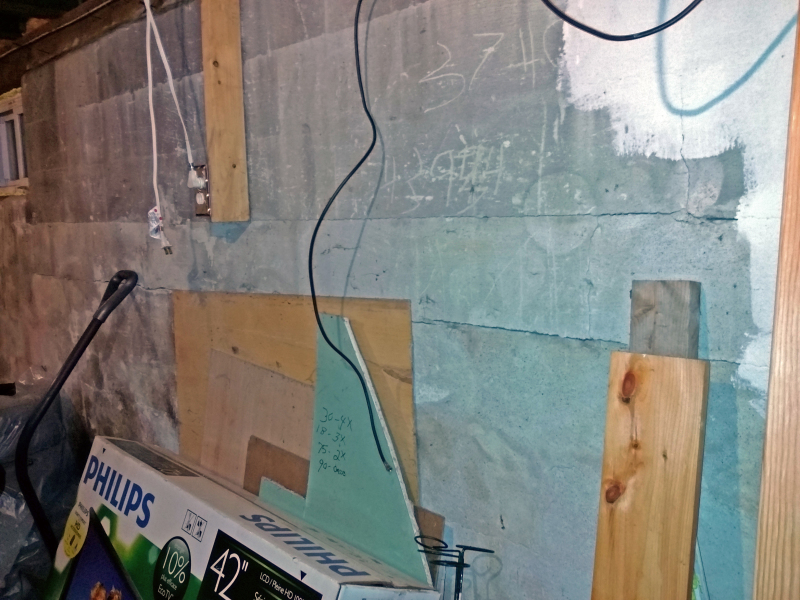Hello. I have a pretty typical horizontal crack in the mortar of a cmu basement wall. Unfortunately, this is my own basement. I am a structural engineer, but don't have much experience in this area, and was hoping I could ask a few questions. Some info:
House was built in 1955. Low basement ceilings (<7 ft), and 12 inch block, so I'm assuming it is ungrouted. The crack is on a bearing wall (only 1 story).I have owned this house less than 2 years, and this appears to be a new crack. However, the wall was heavily painted, and it's possible the crack was always there and I just didn't notice it, and now the paint is peeling away.
The crack is consistent in size, only 0.03 inches running horizontally. It runs the middle length of the wall, and goes in a step pattern to the footing at each end. So it appears to be a pretty obvious case of an overloaded wall with tension cracks. The wall is deflecting about 0.5 inches at the crack. The soil around my house is mostly clay, too.
What I don't understand, is that the crack (and max deflection) is located in the upper third of the wall, actually at grade level. I should also mention the top three courses are 8 inch block, and the crack is in the mortar between the transition from 8" to 12". The area outside is covered by a deck, and i did some crawling around under there and it was really poorly graded. Strong possibility of standing water outside the wall.
Any thoughts or opinions would be greatly appreciated, especially on repair methods. I've seen these carbon fiber strips discussed, that seems to be the most economical. Or using steel members tied to the floor slab and to the floor joists. My thoughts are to monitor the crack, see if there is any change in size, before trying an expensive repair. The crack and deflection don't seem too horrible to me, at this point. Thanks
House was built in 1955. Low basement ceilings (<7 ft), and 12 inch block, so I'm assuming it is ungrouted. The crack is on a bearing wall (only 1 story).I have owned this house less than 2 years, and this appears to be a new crack. However, the wall was heavily painted, and it's possible the crack was always there and I just didn't notice it, and now the paint is peeling away.
The crack is consistent in size, only 0.03 inches running horizontally. It runs the middle length of the wall, and goes in a step pattern to the footing at each end. So it appears to be a pretty obvious case of an overloaded wall with tension cracks. The wall is deflecting about 0.5 inches at the crack. The soil around my house is mostly clay, too.
What I don't understand, is that the crack (and max deflection) is located in the upper third of the wall, actually at grade level. I should also mention the top three courses are 8 inch block, and the crack is in the mortar between the transition from 8" to 12". The area outside is covered by a deck, and i did some crawling around under there and it was really poorly graded. Strong possibility of standing water outside the wall.
Any thoughts or opinions would be greatly appreciated, especially on repair methods. I've seen these carbon fiber strips discussed, that seems to be the most economical. Or using steel members tied to the floor slab and to the floor joists. My thoughts are to monitor the crack, see if there is any change in size, before trying an expensive repair. The crack and deflection don't seem too horrible to me, at this point. Thanks


![[thumbsdown] [thumbsdown] [thumbsdown]](/data/assets/smilies/thumbsdown.gif)